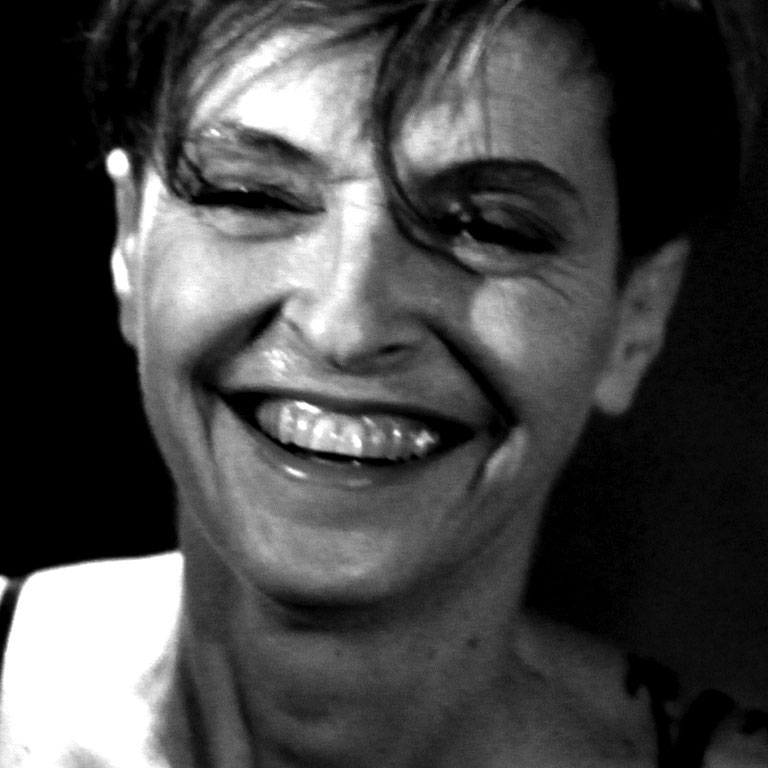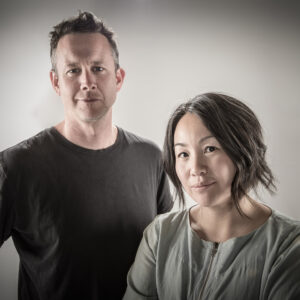Dany Lyne
Laureate, 2006
Image: Name, Title, Description
01
2006 Laureate
In selecting Dany Lyne as the recipient of the 2006 Siminovitch Prize in Theatre, the Jury was particularly impressed by the evolution of her work. “While sensitive to the metaphors of words and music, Ms. Lyne’s work sustains the narrative logic of the piece. She rises to the demands of working in the realm of opera, while also being able to deftly apply her creative vision to productions for both small and large theatres. Each project is a laboratory in which she collaborates with her fellow artists, while exploring and applying her vision. Poised to fully realize her creative powers, Ms. Lyne is an artist who establishes a visible and highly unique creative signature in Canadian theatre and beyond.”
Ms. Lyne has been involved in 72 productions in Canada, the United States and Europe, from new plays, to opera, from small independent theatres to large international theatres. Her work has been seen at the Stratford Festival of Canada, the Canadian Opera Company, Theatre Français de Toronto, Necessary Angel Theatre Company, Soulpepper, National Arts Centre, Tarragon Theatre, Elgin Theatre, Tapestry New Opera Works, Pacific Opera, Cincinnati Opera, Central City Opera – Denver, Nationale Reisopera – Netherlands, Opera North – England, De Vlaamse Opera – Belgium, among others.
Acceptance Speech
Merci infiniment aux fondateurs du Prix Siminovitch de théâtre. Merci à vous, Lou, ainsi qu’à votre regrettée épouse Elinor. Merci à Tony et Elisabeth Comper et à BMO pour cette magnifique soirée qui célèbre la scénographie canadienne. Et finalement, merci à vous Peter Hinton, pour avoir proposé ma candidature et pour votre collaboration remarquable et passionnée à nos projets.
I must also give a big thank-you to my chosen family – to my parents-in-law, Helga and Gerhard Rudolph, who have been unfailingly enthusiastic about and interested in my work, and to my partner, Katja Rudolph, whose unflagging support has helped to get me to this podium. She has never once questioned the sacrifices required to do art, and I am inspired by her own artistic journey as a writer. Hers is the best novel I’ve read this year – still in manuscript form, but hopefully to be picked up soon by an agent or publisher!
Theatre has saved my life… and it has also almost killed me! As melodramatic as this may sound, I mean it quite literally.
I have wanted to be an artist ever since I was very young. Growing up in a family ravaged by violence and abuse, the mythos of the artist was like a beacon to me. It was an identity that I could aspire to, one that promised more from existence than the pitiful prospect around me. I even dressed up as an artist for Halloween – it was a clichéd caricature that I created, including black beret, suspenders, round glasses, gray mustache like my beloved Monsieur Bertillon, my Grade 4 art teacher. But even at that age I knew the artist to be a potent force in society, to be a poetic investigator and a political agitator. I saw the artist as a creator of beauty, as a challenger of beauty, as a consummate observer and reporter, as a committed iconoclast and visionary. Somehow, even as a young child, I knew that it is the artist who takes on the role of relentless story-teller in our culture and society. It is the artist who takes up the narratives in circulation there – dominant narratives, lost narratives, narratives of desolation and despair, narratives of hope and redemption – and transforms them into a poetic, stylized form that an audience can encounter like a mirror. It is the artist whose sole purpose is to experiment, expose, propose, engage, uplift and challenge us to confront ourselves. Challenge us to confront our own humanity and inhumanity and thereby perhaps support a united attempt to reach for a peaceful, spiritually vibrant future for us all. For someone suffocated by a deathly familial silence within a worldview that had no meaning for me, this vision of a life of conscious, purpose-driven story-telling kept me going. It kept me literally, too many times to count, from plunging off the Jacques Cartier Bridge into the St. Lawrence River. As melodramatic as that sounds.
During my tumultuous twenties, I was a fine-arts student at the Ontario College of Art and Design. It is there that I met Dr. Paul Baker, the professor of an introduction to theatre course. I instantly fell in love with theatre. I also fell in love with Paul as a teacher. I was 26, and had already worked in interior decoration, graphic design, font design and was attempting to become a painter. It clearly took me a while to find my medium!
There had been no theater in my childhood. So, when I found it, I was stunned and amazed. The sheer multi-dimensionality of theatre filled me with incredible awe: not only is it three-dimensional visually, it is space-specific, unfolds in real time, includes spoken or sung word, explores the truths and lies of existence through narrative, and engages the soul of the musician and the expressiveness of the human body. Further, it miraculously weaves together the passion and vision of many collaborators – and I emphasize the word “miracle” here – from the psychological, spiritual, and political insights of the writer to the musical vision of the composer to the interpretive will of the creative team – director, conductor, designers, stage manager – to the generosity of actors and singers and musicians to the technical and artistic skill and dedication of the production teams. Finally, and equally miraculously, it demands the commitment and openness of an audience. The artist in me saw in theatre and opera the most exciting, complex and ambitious of mediums. I succumbed fully to the rich world of words, music and images and through this began to understand my own personal world, to finally see it reflected back at me. Translating the texts into images empowered me to engage in my own act of transformation.
Set and costume design allows me to turn a physical space into a psychological and symbolic setting. In close collaboration with the director, I strive to create a visual poetic-arc that best supports the unfolding story and best represents the emotional landscape of the characters. Focusing on the scene-sequence and the metamorphosis of the protagonists, I search for a central visual metaphor that emphasizes underlying themes and resonates with the author’s symbolism. Whether the text is about the politics of war or the most modest of personal events, one striking image can, in my view, encapsulate the drama. Within this one cohesive poetic visual field, my goal is to articulate the story in such a way that the impact of each scene is accentuated. Subtle and transformative set and costumes convey what is at stake in the unfolding story.
Process plays a critical role in the creation of this represented world. I invite directors to work with me in my studio for days at a time at several stages of the design. We sit at my desk and go over the text line by painstaking line. We discuss everything under the sun in relation to this text – our political views, our aesthetic longings, our own biographies. And we order a lot of Thai food! Eventually, we develop a shared understanding of the story and its mythic relevance to us and to our time and place. The electricity that is generated from such a design-process can, if all goes well, carry through to the rehearsals and technical rehearsals. The actors, singers and lighting-designer participate in this creative act and the accumulation of their insights refines our dramatic world further.
It is hard to convey the euphoria of a perfect opening night. One experiences that a handful of times in a career. I felt it once in particular at the Cincinnati Opera House with a production of Strauss’s Elektra directed by Nicolas Muni. At the end, there were several seconds of absolute silence, then an enormous rushing sound as a conservative Midwestern audience rose as one to their feet and began clapping and shouting, applauding a crazed, atonal, out-of-control, exquisite operatic rant. They clapped for ten minutes. In that brief time, everything expended in the creation process and more was given back to me. As empty as I’d just been feeling – I was exhausted and already mourning a finished project – I was filled instantly, and knew in that moment that I had my creative fuel for the next few years.
So what about theatre almost killing me? As I said, very early on I clutched onto the arts and later specifically theatre as a lifeline. For me, it became part of my daily life-and-death struggle for a better existence. Everything was invested in the creative process and the journey required to put something substantive, beautiful, and poetic on the stage. The sheer effort of doing this is indescribable. I myself can never fully grasp how it can take so much time and energy. I fear that sometimes the intensity – the very life-and-deathness – that I bring to theatre makes me less than relaxing to work with at times!
But in addition to my own life-story and personality, there are very real obstacles to great theatre and opera design in Canada. Theatre really does kill you a little bit every day while it is saving you from yourself, lifting you up. It’s just so damn hard. Firstly, in Germany, a designer makes an excellent living designing two shows a year. Here it is impossible to make a living designing two shows a year. One has to book oneself absolutely solid and overlap projects to make a moderately decent living. This is exhausting and unsustainable. The PACT minimums set by ADC, which are the current industry standards, do not in any way recognize the expense of maintaining a studio and the incredibly time-intensive occupation that design is. If broken down into payment per hour, designers probably make amongst the least in theatre in Canada. I once actually calculated that I’d done a design for $6.35 an hour. Quite a big design, too, for a big company. Where others in theatres have contracts that last a few weeks, designers often have contracts that last many months over a period of years and their lump-sum payment does not reflect this. Secondly, designers cannot experiment, cannot push their art, test their materials, without having a theatre support the essential research and development required to grow and develop. Theatres are often reluctant to pay for this risk and the designer finds her or himself fighting for resources. Therefore, the designer is always in the end, unlike other theatre artists, inextricably linked to money, to the pesky, unpredictable financial figures of set, prop and costume production and can rarely simply be an artist attempting to push themselves to greater artistic heights. Thirdly, the financial burden of the ever-growing administrative side of theatre shifts the focus away from the stage to the office and to other programs theatres now offer. The corporatization of theatre is a real concern of mine. I hope we don’t go too far down that road, where theatre is run like a value-added business. Businesses sell products, but theatre isn’t selling a product: theatre is a participant in the life of the people. Theatre is the heart of a nation, a place where we can face ourselves, we can tell our stories, break our silences, save a few lives, literally and spiritually speaking. Or so it should be. Governments need to realize this, and it will take inventiveness for theatres to balance the books while at the same time building creative, artist-friendly, democratic administrations. We have to remember that without the stage, and the artists who fill that stage, theatres could not run their other programs and arts administrators would also be out of luck.
The above struggles push designers perilously close to burn-out. Burn-out is death to an artist, and for me, this means also a kind of death of myself. The struggle to get my vision on stage really has been kind of killing me in the last little while, with notable exceptions. Young designers are not lasting long enough in the business to become the great designers they could be. If the artist is to continue to be a beacon to generations coming up, if these generations are to continue to aspire to that mythic persona, we need to make sure that artists don’t all drop out and take jobs in banks. We need people to work in banks, but we also, as a society, need artists. A prize such as this tonight is a huge symbolic boost, as well as, to a few of us, an incredible material boost when it counts the most, mid-career when energy is flagging, and all artists here tonight are very grateful for it – Let’s have more of them! – but we also need systemic change.
I never cease to be in awe of the theatrical endeavor. It is my hope that this miraculous collaborative act can itself be a kind of exemplary metaphor for life outside of theatre. It is a source of hope to me to see what people can accomplish together in the spirit of a shared creative vision. Let’s bring what is vital and transformative in theatre to the outside world, rather than let the norms of the outside world run our theatres. We need to decide that we are a nation that values the art that enriches the life of the nation, the art that sometimes even saves individual lives, literally and spiritually speaking.
This is the really fun part. It’s an unbelievable pleasure to be able to honour two designers whose work and commitment I admire very much: April Anne Viczko, a discerning, architectural and poetic artist. I have worked with April a great deal in the last two years. Her passion, skill and unsurpassed sense of humour go a very long way to making a project fly high. And Camellia Koo: a meticulous, sculptural and symbolic interpreter. She brings precision, patience and great theatrical vision to her work. It’s been my pleasure to work with her over the last four years.
We also wish to encourage a recent theatre design graduate: Jung-Hye Kim, whose talent and determination to become a designer are remarkable. I’ve been really impressed by her hard-working ethic and initiative.
2006 Protégé
02
Simi News
Subscribe today to the monthly e-newsletter.
> Be the first to know about current artistic projects of the Siminovitch Prize community.
> Learn about emerging artists who are shaping the future of Canadian theatre.
> Stay informed about upcoming opportunities and calls for nominations.




